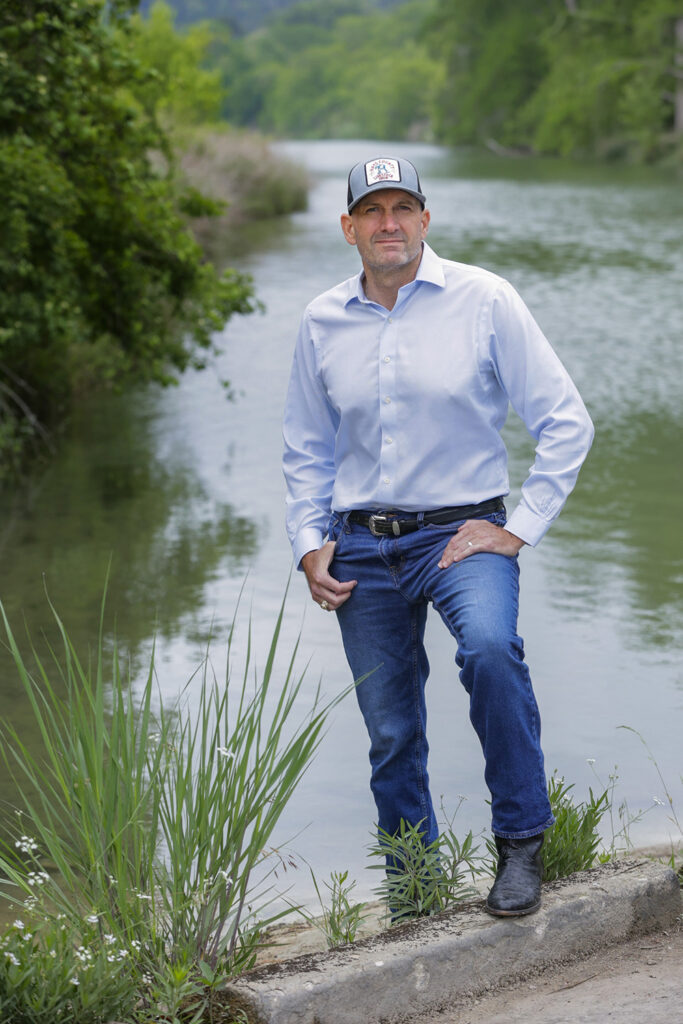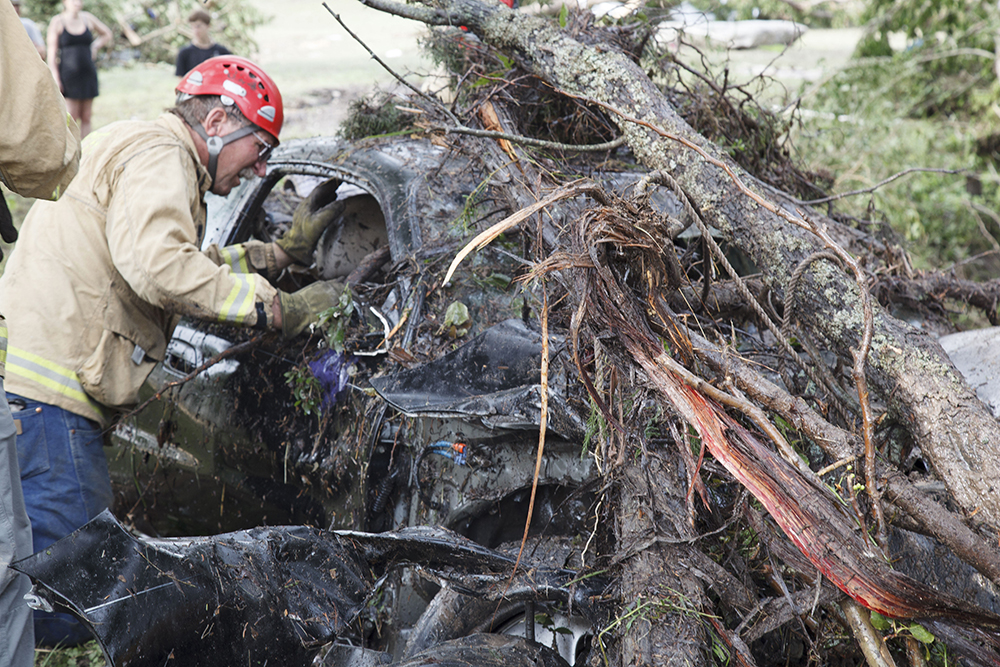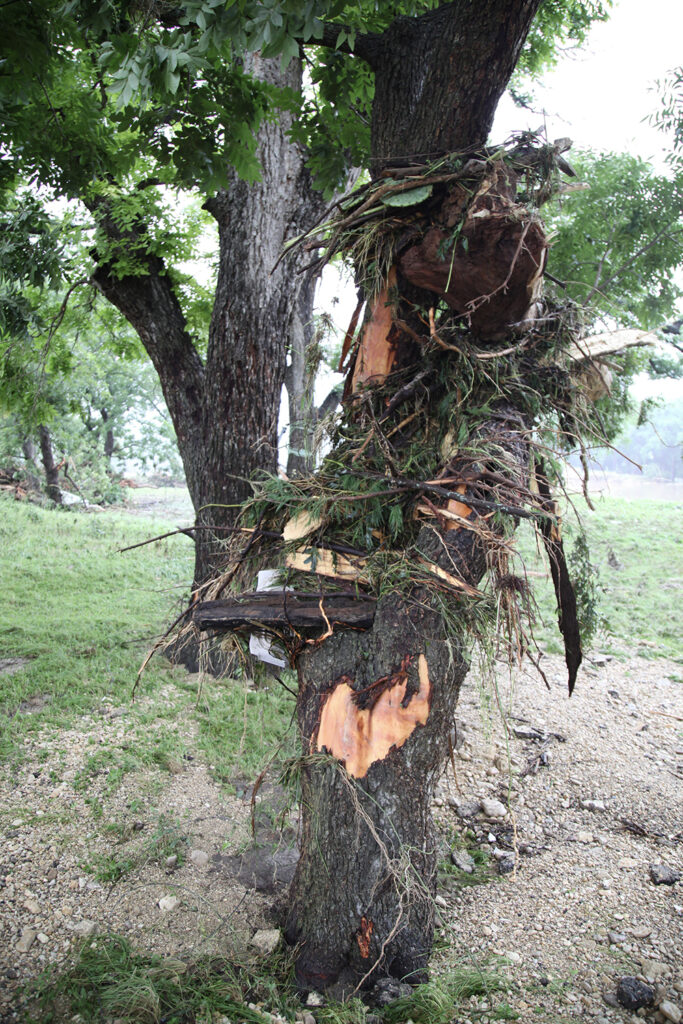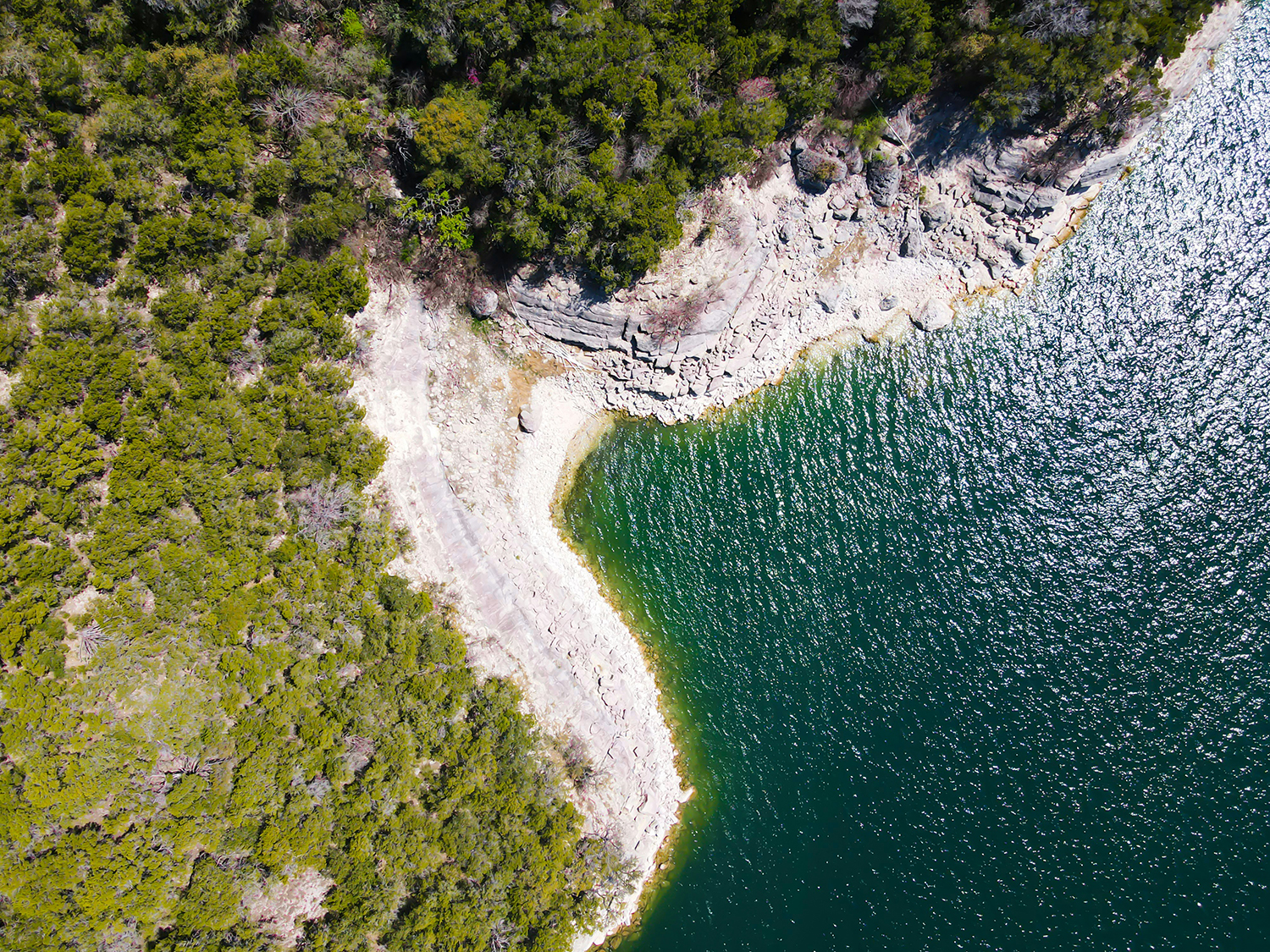Those who have lived here a while have heard repeated reference to the drought of the 1950s. It was bad. In “Flash Floods in Texas,” Jonathan Burnett describes the stark circumstances of the drought. In early September 1952, Lake Travis was at an all-time low, rivers like the Llano and Pedernales were bone dry, and the federal government initiated “Operation Haylift” to start transporting hay from Iowa to Texas. Days later, communities across the Hill Country received a torrent of precipitation — in many areas totaling over 20 inches of rainfall. The Pedernales River reached a 31-foot flood stage, blocking traffic to Kerrville, converting the town of Stonewall into an island, and redistributing the Highway 281 bridge in Johnson City.
Yet this epic rain event did not stop the 1950s drought. Agricultural producers who had lost their topsoil, tractors, shade trees, livestock, and fences to the floods began to recover during what would become several more years of intense drought.
Retired Hays County Commissioner Lon Shell grew up in San Marcos. The son of a librarian and professor of agriculture, Shell graduated from San Marcos High School a life-long learner. Living near the San Marcos Springs, Shell affirms, it’s hard not to develop a basic grasp of aquifers, springs and rivers. But groundwater was not top of mind. Not then.

Shell attended Texas A&M University and graduated with a Bachelor of Science in Mechanical Engineering. He then launched his engineering career in Houston and Dallas.
After a decade, Shell moved back home to San Marcos, started a family, and began to apply his engineering background to a different type of complex system — county government.
For years, he served his community as Hays County Chief of Staff. It was a crash course on all-things county government. “I got to know all the departments, worked with staff and all the elected officials to understand and address constituents’ issues.”
Roads and criminal justice are the bread and butter of county governments in Texas. “That’s where most of the taxes go. And those things are important, but so too are other aspects of our communities’ safety and future.”
During his time as county staff, Shell witnessed the acceleration of growth in Hays County and growing demands on underground aquifers. “We were at the epicenter of growth. This was not some abstract idea or story happening somewhere else. We were starting to experience real growing pains and raise big questions like, where is the water going to come from?”
In 2018, Shell took a big step, transitioning from staff to Hays County Precinct 3 Commissioner. Having previously worked with the other county commissioners, he already knew they provided great strengths and experience in multiple core areas. “I wanted to learn and contribute something new. Conservation did not come overnight, but I started to learn from non-profit organizations as well as the county’s past efforts to protect Jacob’s Well and other natural resources.”
The people of Hays County rely on aquifers for drinking water and have powerful visuals like Jacob’s Well, a spring fed by the Trinity Aquifer, to reflect the status of groundwater levels.
Ultimately, Shell came to a key conclusion: Both the people who just moved here, as well as people who can trace their roots back generations, all cherish this place. “How do we protect what we have and maintain this place’s unique identity — the rivers, creeks, working lands with livestock, and quality of life — in the face of growth?”
Shell concluded that some of the solutions would come from leveraging the excitement around cherished places, spending wisely, and building on the county’s past experiences with parks and open spaces bonds.
Setting the stage for a county bond requires lots of planning. It demands community trust, an alignment with what taxpayers are willing and able to invest, as well as assessing how to issue debt responsibly. In 2020, more than 70% of Hays County voters approved a $75 million Parks & Open Space Bond.
The county bond checked off many boxes. “Yes, we created parks for families, and these areas are loved,” Shell said. “We also protected drinking water quality, groundwater recharge, wildlife habitat and flood mitigation for local families,” by conserving open spaces capable of slowing, filtering and absorbing precipitation during typical rain events.
Perhaps the most iconic outcome from the 2020 Parks & Open Spaces Bond is the creation of the 530-acre Sentinel Peak Preserve. Still in the works, the Preserve will provide rare public access to a one-mile stretch of the Blanco River, while also protecting water quality and quantity for downstream communities.
Last year, after 14 years of serving the people of Hays County as staff and then commissioner, Shell retired. He remains confident that the solutions need to be grounded in our shared love of the Hill Country. “We need to get beyond ‘me versus you’ and think about the future of all of us. We need to be diligent and reasonable and find multiple solutions.”
Across the Hill Country, communities are identifying a variety of solutions to protect water resources in the face of drought and population growth. Local governments have passed “One Water” resolutions, committing to learning more innovative and integrated approaches to conserving and reusing all forms of water (e.g. drinking water, wastewater, stormwater, and greywater), while others, for example, are investing in mitigating substantial water loss by fixing leaking pipes. There are also the incentives (e.g. offering rebates for rainwater harvesting) and the regulations (e.g. managing the spacing of groundwater wells).
Close to home, Shell has enjoyed watching another local solution emerge from the Wimberly Independent School District. The District built the Blue Hole One Water Primary School, the first of its kind in Texas. The school reduces 90% of its water consumption by collecting and reusing all forms of water — from AC condensation to grey and black water — and is projected to save the district substantially in long-term water and wastewater service costs.


Shell recalls attending the school board meeting where the district decided to incorporate a “One Water” approach. “It was impressive watching the district take feedback from and work with the community. Today, people from all over want to see the One Water School. It’s not imagined. It’s a real-world example of what we can accomplish together.”
Cities, counties, school districts, and groundwater conservation districts are looking at what they can do to preserve groundwater. Shell recognizes that we don’t all have the same solutions to protect this remarkable place, and that’s good; we need different thoughts and ideas to protect our water and our future. “How you get started can be the toughest part,” reflects Shell. “It can be hard to find your footing with such a complex issue like water. You can’t do it alone. You need perseverance and good partnerships.”
Spring 2025 found the Hill Country nearing the 1950s drought of record. After several years of below average precipitation and high temperatures, reservoirs such as Canyon Lake and Lake Buchanan dipped below 50% and the Edwards Aquifer Authority, for the first time, declared a Stage 5 Drought. A distant memory, spring feels like the “Before Time.”
After the historic and devastating floods — first on June 13 in San Antonio, then on July 4 across much of Central Texas — the scale of destruction across watersheds leaves many stories of loss, heroism and resilience unknown. What is known is that today, numerous communities across the region — from Bexar and Burnet to Kendall and Kerr, Menard and McCulloch, Tom Green and Travis Counties, and more — have embarked on a journey of healing. Several do so in various stages of drought.
Angela Blanchard has spent most of her life along the Texas Gulf. Her family roots follow Interstate 10, connecting nearly every small town between Houston and New Orleans. A Beaumont native, she moved to Houston to make a living. There, she dedicated her life to community development and recovery. Angela has helped communities along the Gulf through Hurricanes Katrina, Harvey, Ike and more. And her Cajun sense of humor and hope remain intact.
During a recent visit to the Texas Hill Country, she shared practical advice and wisdom for ongoing flood recovery efforts. “We do not look back for ‘normal.’ We look forward for what is new and next.” Blanchard recognizes that this is a tough message. “We want our feet on solid ground, but we need to ask what is now possible in this place.”
The region is not just mourning the loss of lives and infrastructure, it is also mourning the loss of a place that made us whole. Some landowners along the Guadalupe River, for example, lost homes and 10 feet of their property to flood waters, while others gained 10 feet of sediment, gravel, rock, and more. Reckoning with these changes and healing — ourselves, the land and the river — will take time.
Blanchard underscores the need for persistence. “We have to maintain ourselves in a state of willingness to do the work in front of us, even if the goals posts move and things change.” She also encourages an open mind as to what this work looks like. “Allow everything that is not destructive. To reignite, we need music, art and a sense of belonging. It’s hard to be mad at people when you’re dancing.”
Droughts are slow-moving. They creep in, quietly shifting the characteristics of soil beneath our feet and incrementally exposing the flanks of our rivers and lakes. Floods, especially the rare and destructive kind that coursed through Flash Flood Alley this summer, are fast. They take and forever change lives in a matter of moments. That we live in a beautiful place where these slow- and fast-moving forces can coalesce warrants taking pause.
Blanchard talks about the healing phase of acceptance in terms of love. “Love unconditionally, but not blindly.” When we marry ourselves to a place, we must also recognize its flaws and many juxtapositions. “See the Hill Country for all that it is,” encourages Blanchard. “Celebrate, steward, mourn and tend to this special place.”
Oppenheimer is the Land Program Director for the Hill Country Alliance and contributor to Rock & Vine magazine.


